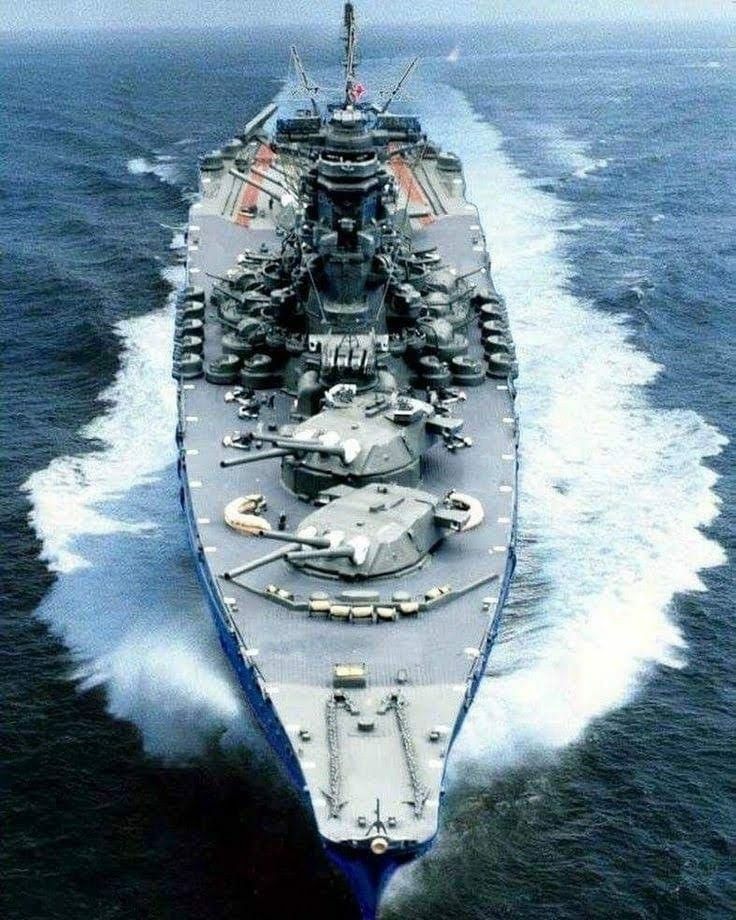The Incredible Story of How the Battleship Yamato (The Largest Ever) Was Destroyed
The Battleship Yamato stands as one of the most iconic and formidable warships in naval history. As the largest and most heavily armed battleship ever built, it symbolized Japan’s military might during World War II. However, despite its immense power and advanced design, Yamato met a dramatic and tragic end. This is the incredible story of how the “unsinkable” giant was ultimately destroyed.

A Monument of Power and Prestige
Commissioned in December 1941, the Yamato was a masterpiece of naval engineering. Weighing over 72,000 tons when fully loaded and armed with nine 460mm (18.1-inch) main guns — the largest naval artillery ever mounted on a warship — it was designed to outmatch any ship in the world. Its thick armor made it nearly impervious to conventional naval firepower.
Built to counter the growing power of the U.S. Navy, the Yamato was a floating fortress that embodied Japan’s naval doctrine of “decisive battle.” The ship’s mere presence was intended to instill fear in its enemies. However, the tides of war soon rendered battleships like Yamato obsolete. The growing dominance of aircraft carriers changed naval warfare forever.

The Final Mission: Operation Ten-Go
By 1945, the Japanese Navy was on the brink of collapse. With American forces advancing toward the Japanese mainland, the Imperial Japanese Navy launched a desperate last-ditch operation — Operation Ten-Go. The plan was audacious but suicidal: Yamato would sail from Japan to Okinawa and act as a “floating fortress,” using its massive guns to support ground troops.
The mission was a one-way trip. Yamato was loaded with just enough fuel to reach Okinawa, as it was understood that it would likely be destroyed before it could return. Accompanied by a small fleet of destroyers and cruisers, the mighty battleship set sail on April 6, 1945.

The Attack Begins: A Sky Full of Death
The U.S. Navy had been monitoring Japanese communications and was fully aware of the operation. On April 7, 1945, as Yamato and its escorts sailed south, a fleet of over 300 American aircraft from Task Force 58 launched a massive attack.
The first wave of dive bombers and torpedo bombers struck at midday. The Japanese fleet’s anti-aircraft guns filled the sky with flak, but it was no match for the swarm of American aircraft. Yamato was hit repeatedly by bombs and torpedoes, causing extensive flooding and fires.
Despite its heavy armor, Yamato was vulnerable below the waterline. American torpedoes were specifically aimed at its port and starboard sides, causing catastrophic flooding in multiple compartments. Damage control crews worked frantically, but the onslaught was relentless.

The Final Moments
After hours of sustained attack, Yamato began to list heavily to port. The situation worsened as water rushed into the lower compartments. At 2:23 PM, a massive explosion rocked the ship. The ammunition stores in the forward magazine detonated in a cataclysmic blast so powerful that it was seen from miles away.
The explosion broke the Yamato in two, and within minutes, the largest battleship in history sank beneath the waves of the East China Sea. Of the 3,332 crew members aboard, only 280 survived. The loss was a devastating blow to Japan, both militarily and symbolically.
Why Did Yamato Fail?
Despite its unmatched size and firepower, the Yamato was a relic of a bygone era. Aircraft carriers, not battleships, had become the dominant force in naval warfare. The development of airpower rendered even the most powerful battleship vulnerable to swarms of bombers and torpedo planes.
Additionally, the decision to send Yamato on a one-way mission reflected Japan’s growing desperation in the final stages of the war. Without air cover or adequate support, the Yamato was doomed from the moment it left port.
Legacy and Symbolism
The story of Yamato endures as a symbol of Japan’s wartime ambition, sacrifice, and tragedy. It remains a subject of fascination in popular culture, inspiring movies, anime, and literature. The ship’s wreckage lies at the bottom of the East China Sea, serving as a silent reminder of the changing nature of warfare and the futility of relying solely on brute force.
Though it was the most powerful battleship ever built, Yamato was ultimately undone by an enemy it was never designed to face — airpower. Its destruction marked the end of the battleship era, ushering in the age of aircraft carriers that continues to shape modern naval strategy.



